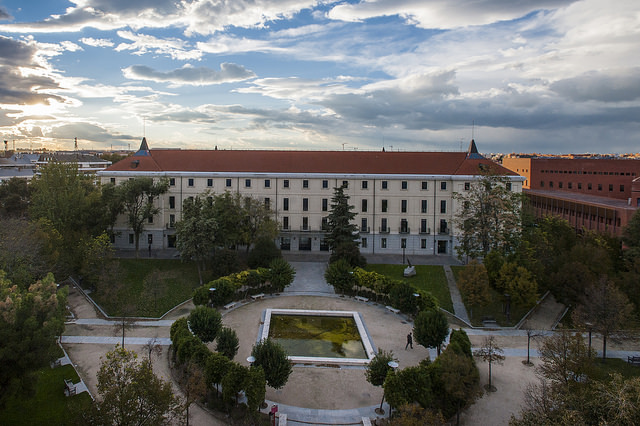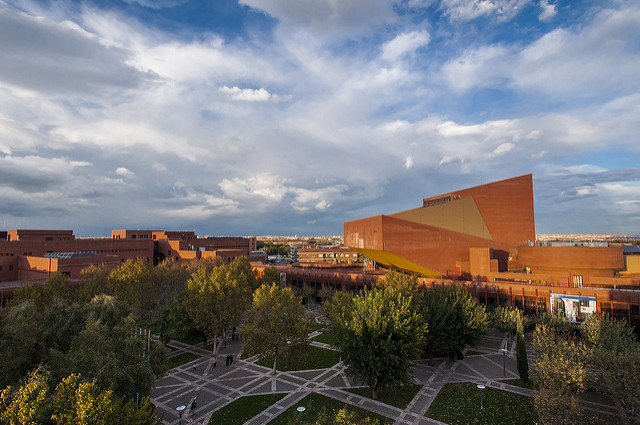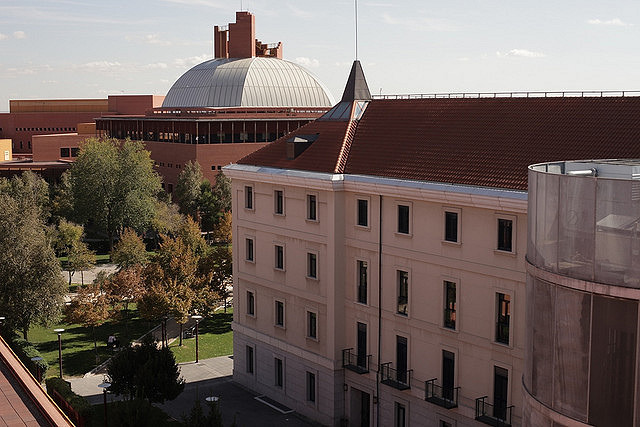Inspiration for Building On-Campus Teams at Universidad Carlos III de Madrid
- Details
- Parent Category: blog
- Published on Wednesday, 06 September 2017 16:00
By Sandra Gesing
Building on-campus teams is a challenging task even if you are not in an academic landscape slowly recovering from drastic budget cuts. In Spain, the whole country is still slowly recovering from the recession 10 years ago, and over 40% of young adults remain unemployed. But on-campus teams seem a possibility in Madrid, where I was inspired by my enthusiastic collaborators Jesus Carretero and Javier Garcia-Blas at Universidad Carlos III de Madrid. I was fortunate to be one of the vice-chairs for the 17th IEEE/ACM International Symposium on Cluster, Cloud and Grid Computing (CCGrid 2017) in Madrid in May 2017 organized by Jesus and Javier. The excellent program featured four parallel tracks, workshops, a poster session and one of the highlights was the keynote by Rick Stevens, the father of the term science gateways.

Being already in Madrid, I used the chance to visit Jesus and Javier at their home institution and to give a seminar on the sustainability of science gateways emphasizing the potential of on-campus groups. Even though building on-campus teams requires endurance and creativity to fit the specific needs of users at each campus, it can be also a rewarding task when it becomes obvious that gateway projects can be served more effectively, efficiently, reliably, and cost effectively. This is an important consideration in Madrid as well as many other universities.
Jesus and Javier did see the potential for their research and their university. The major research lines of the Computer Architecture Group led by Jesus are high-performance computing and cloud computing, application optimizations, big data, real-time systems and internet of things, and simulation of industrial systems. Their work is often interdisciplinary and involves multidisciplinary teams and, thus, requires them to create an easy-to-use, end-to-end solution—which are science gateways. Our discussions led to a clear roadmap for targeting funding on campus to support their work via cyberpractitioners, who would provide the expertise and labor for such projects. First, they would investigate existing solutions for on-campus science gateways such as HUBzero and Apache Airavata. Second, they would build 2-3 science gateways for projects with the chosen framework (for funded projects they would need to build a science gateway anyway). Third, they would present these available solutions campus-wide, emphasizing the advantages and gain in efficiency that they experienced by basing their solutions on a mature framework. Fourth, they would partner with faculty on-campus. Finally, they would request funding for a first cyberpractitioner position from the university management. I am looking forward to hearing about their experiences, finding their solutions in SGCI’s Software Scientific Collaborative, and attending webinars about their projects.
Sadly, they are so well organized that there is no need for me to visit Madrid again—at least not for this purpose. I highly recommend to anyone to visit the University if you get a chance. It’s a young and aspiring institution that values merit, ability, efficiency, transparency, fairness, equality, and respect for the environment. And I can recommend to anyone who has not been in Madrid yet to put the city on their bucket list. It is a vibrant city with beautiful architecture, amazing food, culture, and museums—also nightlife until dawn. Don’t miss out on going to Botin, the oldest restaurant in the world (according to the Guinness Book of Records), located in the heart of Madrid.

